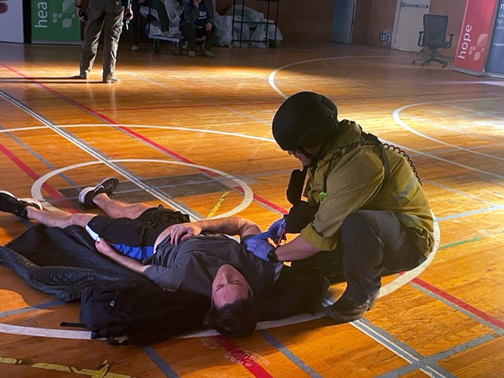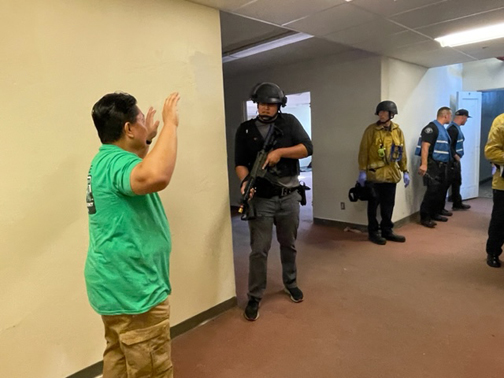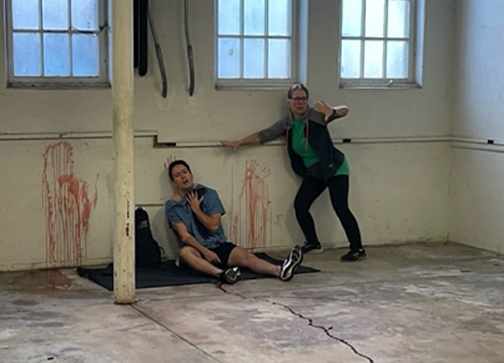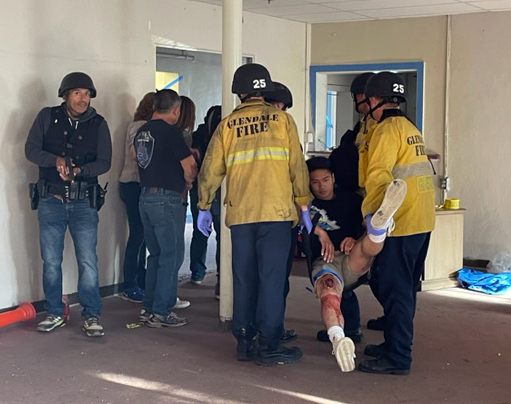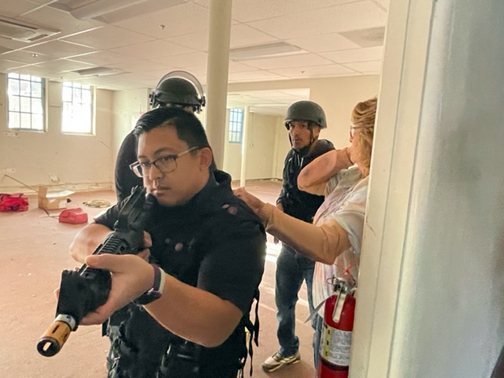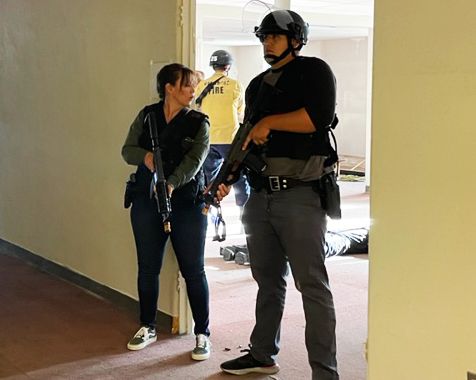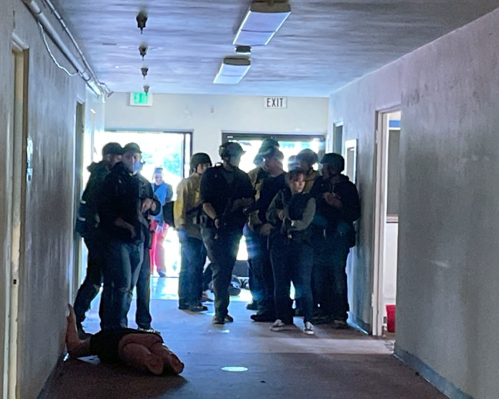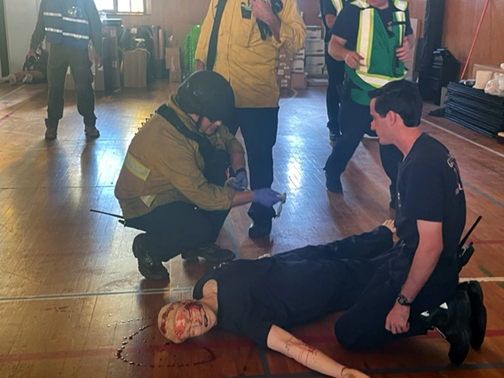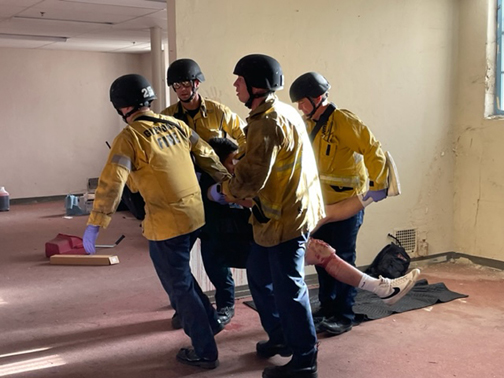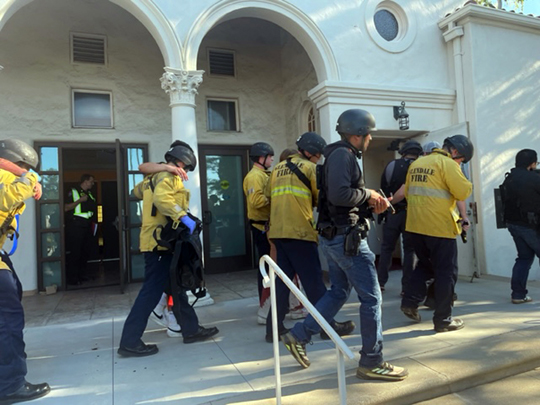
Photos by Mary O’KEEFE
By Mary O’KEEFE
On Thursday morning, Oct. 19, CVW was invited to an active shooter training involving Glendale fire and police departments.
Officer Andres Rico, a member of GPD’s Training Bureau, and Battalion Chief Todd Tucker, Emergency Medical Services Bureau, led the officers in the training.
“We haven’t done this since before the pandemic,” Tucker said. He added training alongside GPD is invaluable in this type of scenario.
In other active shooter trainings, GPD officers will first enter a building where a shooter has been observed; the first officers to arrive will enter the building in search of the active shooter. In Thursday’s scenario, the shooter had already been discovered by the first round of officers; then fire personnel and other officers entered the building.
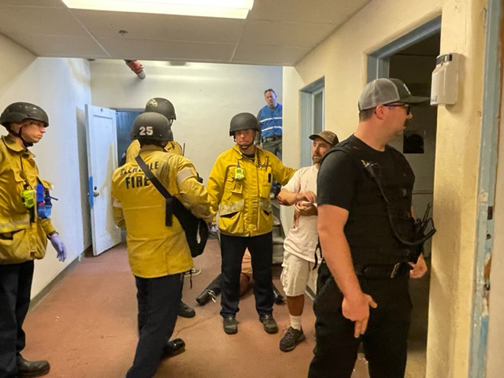
This reflects the real-life scenario: after a shooting is follow up to save the lives of the victims. Thursday’s scenario had police first enter to make certain danger was not immediate then fire personnel entered to triage and tend to the victims. They also worked to get the victims out of the area and to also establish a command center.
This was the fifth day of training and Tucker said every team had handled the scenario in a different way.
An empty building donated by Adventist Hospital was the training area. Several rooms were used to create the carnage that follows an active shooter incident. Glendale Community Emergency Response Team members volunteered to be victims. They, as well as prop (mannequin) victims, were placed throughout the building.
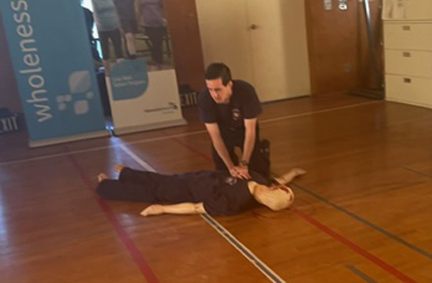
The success of the training depended on communication between fire team members as well as between fire and police personnel.
It was important that police officers communicated with each other as they cleared each room and then encircled the fire personnel as they tended to the victims. Fire personnel then worked on triage. Those who were able to leave the area, called “the walking wounded,” were taken to the door and then to the incident command center. Fire personnel determined who had to be carried out and, unfortunately, had to move past victims who were dead while working to save who they could.
At the end of the training fire and police personnel would gather to discuss what worked and what did not.
“We are hoping we made this realistic,” Tucker said emphasizing the intention to make the training realistic and portray the stress of an actual active shooter situation.
